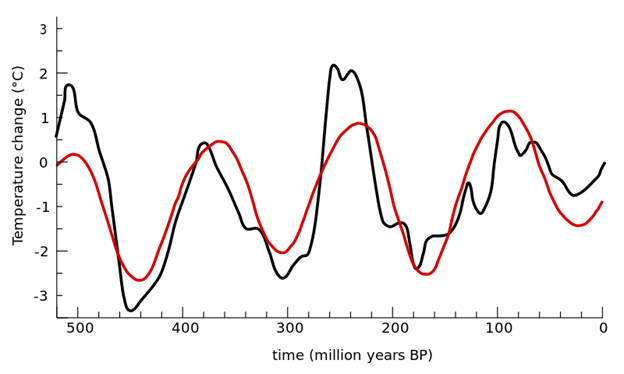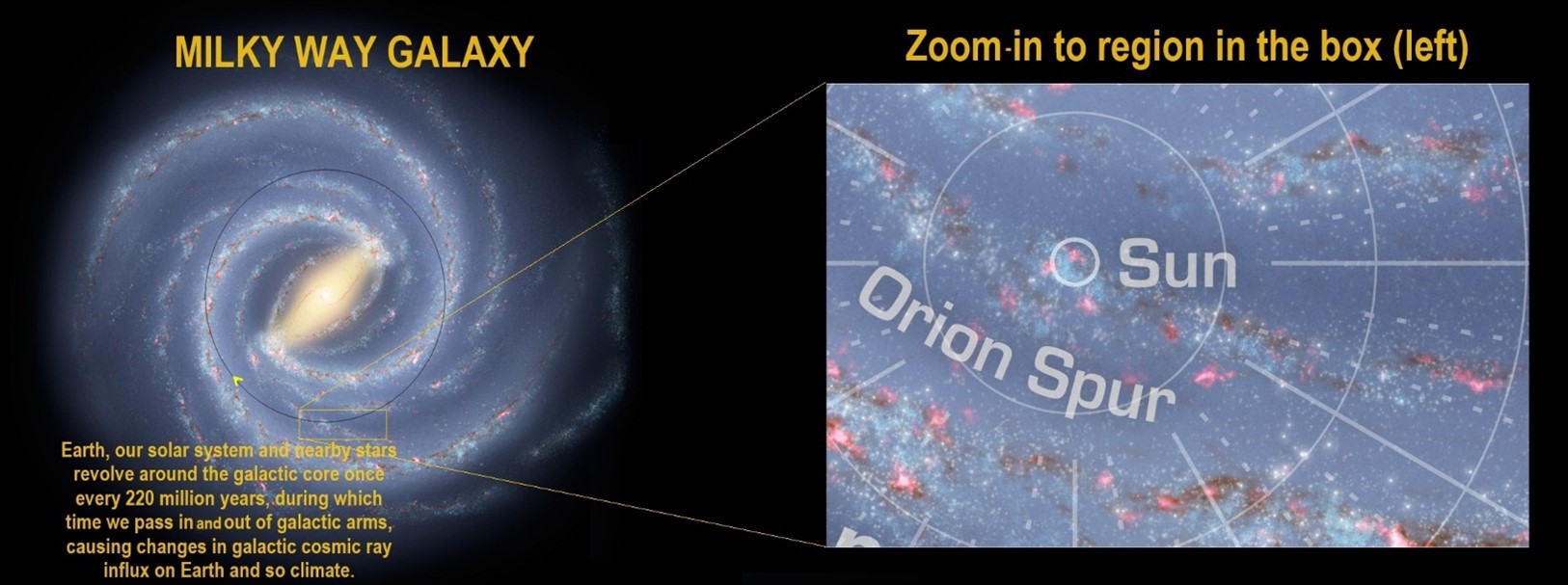
The curves to pay attention to in the above figure are:
- In the top graph, the red curve, which is the original blue line GCR flux reconstruction, after the exact flux periodicity was "fine-tuned, within the GCR flux reconstruction error." The yellow shading shows the allowed error range.
- In the bottom graph:
- The black line is the geologic temperature reconstruction found by Veizer.
- The red curve is the temperature that theory predicts if the temperature change is caused by GCR flux.
Advertisement
Note how closely the lower black curve (the temperature history as determined by fossils) and the red curve (the forecast GCR-induced temperature change) coincide in both periodicity and magnitude. For simplicity, here are those two curves on their own:

So how does the influx of GCR cause temperature change? Here is the theory, which, as I will explain in part 3 of this series, is supported by experimentation:
As the GCRs penetrate the Earth's atmosphere, they encourage the formation of particles in the lower atmosphere which are referred to as condensation nuclei. These are particles around which a microscopic form of liquid water forms, causing clouds. It takes about a million of these particles to form a moderate-sized raindrop. Low level clouds act like a screen in a greenhouse controlling the temperature, so when there are more clouds, the Earth cools.
And what could cause GCR flux variations with a periodicity of 140 million years? It is our movement in and out of the Milky Way Galaxy's spiral arms and other stellar 'density waves,' which cause varying amounts of cloud-causing GCRsas our distance to young supernovas stars varies.

Advertisement
So, it is our position in our home galaxy, specifically our proximity to GCR-producing supernovas, that ultimate determines massive, very long-term changes in Earth's climate.
This is fascinating, of course, but climate campaigners complain that such long-term phenomena have nothing to do with climate change over the past century. But they are wrong. It has everything to do with climate change today.
Next week, I will explain why, and how, the Sun, through its impact on the GCR flux that we experience on Earth, appears to be the most important short and medium-term driver of climate change. Carbon dioxide emissions have little impact on our planet's climate.
Discuss in our Forums
See what other readers are saying about this article!
Click here to read & post comments.
8 posts so far.